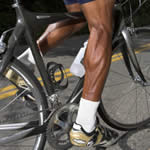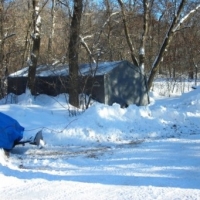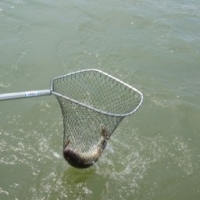
You've ridden some centuries, but how far can you ride? A 200K (124 miles)? A double century (200 miles)? That's how I got hooked into ultra-distance riding and I kept pushing my limits until I completed the Race Across America.
Here's what I've learned as a cyclist and coach about training for and riding events from 200K to 200 miles. You can also apply these tips to longer ultra rides.
More: Video: How to Prepare for an Ultra-Distance Event
You should train up to a ride of 2/3 to 3/4 the duration of the planned event. Your speed for a double century will be slower than for 100 miles because of the cumulative fatigue. If you can ride a comparably hilly century in seven hours, then your first double century will probably take 16 hours or more. So you should build up to a peak training ride of 11 to 12 hours.
When you train for a century you probably ramp up with a longer ride each week, 3 hours, 3:30, 4:00, 4:30, 5:00, etc.. This ramping pattern will also work for a 200K.
However, when training for a double century, if you ramp up the duration of your rides every weekend you may have a hard time recovering physically and mentally from one weekend to the next. Once you are fit for a century follow a see-saw pattern from weekend to weekend: 7 hours, 2:00, 8:00, 2:30, 9:00, 3:00, 10:00, 3:30, 11:00, 4:00.
More: 10 Training Fundamentals for Cyclists
Ride the longer weekend rides (7:00, 8:00, etc.) at the pace at which you expect to ride the second half of your double century. This will help you dial in your pacing.
Ride the shorter weekend rides at a brisker pace than you'll be riding the double to build your cruising speed.
Train by time rather than miles because how far you ride in X hours will depend on how hilly the course is, whether it's windy, if you are riding with a good group and other factors.
More: Preparing for a Hilly Century
Every week, include an intensity ride during the week to build power. Warm up, do a mixed intensity workout and then cool down. The mixed intensity portion should include very hard riding and easier recovery spinning. You can do structured intervals, hill repeats or just sprint with friends to different points on the ride. During the weeks with the shorter weekend rides, you can add a second intensity ride.
More: The Science Behind Mixing Training Intensity
Plan your peak training ride two to three weekends before your double century. Then taper with shorter rides of just three to four hours on the last weekend to be sure you are fully recovered. Continue one or two short intensity rides each week to maintain your leg speed.
You can tough it out for 100 miles even if you aren't eating properly, but riding a double century that way gets ugly! When you ride you burn a combination of glycogen (from carbohydrate) and fat for energy. We all have enough fat for the ride but only enough glycogen for several hours of hard riding. If you run out of glycogen, you bonk (your brain feels fuzzy) and hit the wall (dead legs).
On your training rides experiment to see what tastes good and sits well in your stomach. You should eat primarily carbohydrates. Sports drinks and bars, fruit, low fat granola bars and cookies, bagels with peanut butter and jelly are all good. Your tastes may change during the long ride so experiment to find a number of satisfying foods.
Find out what the event organizers will be serving and test all your nutrition on your long rides. If you don't like what they provide, bring your own. Nothing new on the big event.
More: How Much Fuel Do You Need During Long Rides
Eat 240 to 360 calories of carbohydrate every hour plus a little protein and fat if you like. Taking on fuel at regular intervals is critical—set your watch to beep every 10-15 minutes to remind you.
Drink enough fluid to satisfy your thirst and so that you are urinating with a good clear stream every couple of hours.
Sodium is the main electrolyte lost in sweat and sodium losses can cause cramping. Sports drinks don't have enough sodium so you also need to eat salty snacks such as pretzels, pickles and deli turkey.
More: 2 Ways to Conquer Cramps on the Bike
What's annoying on a century could become a showstopper on a long ride. If you haven't had a professional bike fit recently, get one. Tell the shop mechanic that you'll be doing a long ride. For ultra distance the bike fit is different—comfort becomes more important than aerodynamics.
More: Bike-Fit Tips From 5 Cycling Experts
Pay particular attention to the points of contact: butt, hands and feet. Discomfort at any of these points will result in pain by the second half of the long ride.
If a saddle fits correctly your weight should rest on your sitz bones and there should be no pressure on the soft tissues. Stand every 10-15 minutes to relieve pressure on the sitz bones. To prevent friction use pure petroleum jelly, which is as effective as more expensive products.
Pressure on the nerves in the palms of your hand will cause pain and numbness. Your core should be strong enough that your hands rest lightly on the bars like you are typing. Move your hands every few minutes to different positions on the bars.
On long rides you may develop hot feet, which result from pressure on the nerves rather than heat. Loosen your shoes and ankle a bit more at the bottom of the stroke. At rest stops take your shoes off and walk around in your socks while flexing your toes.
All the time on the bike puts a real overload on your body. If you don't work on your recovery your body will remain in a broken-down state and you won't be able to train effectively nor ride well. After a ride:
More: The Role of Protein in Exercise Recovery
An ultra-distance ride always has at least one mentally tough section. For me it's the ugly middle. I start out fresh and excited by the ride and then I start to get tired. It's a long way to the finish and I can't imagine riding that far! Finally, I can smell the barn and my energy revives. In between is the ugly middle!
When you get to the ugly middle don't think about how far you have to go. Focus on just riding to the top of this climb...or the next 10 miles...or the next rest stop. Bite off and chew one chunk of the ride at a time.
Practice pacing yourself on your long rides. You should always be able to talk! Even on the climbs you should be able to talk in short sentences, although not sing or whistle. Learn to expend your energy evenly throughout the day rather than going too hard and then fading.
Learn to focus on the rhythm of your breathing. When you get too stressed, your breathing tends to get ragged, which disrupts your smooth, efficient pedal stroke.
If something unexpected happens such as a strong headwind, mechanical problem or upset stomach, just focus on your breathing and relax for a minute or two. Then ask yourself "How bad is this really?" "Is this something in my control (fixing the mechanical) or something I'll just have to put up with (the headwind)?"
More: How to Improve Your Breathing on the Bike
Since you like riding your bike what could be more fun than all day in the saddle! You'll meet new riders and perhaps riding partners. Take a few business cards to exchange. You'll experience the flow of the day from early morning until early evening. You'll have a tremendous sense of accomplishment when you finish. Follow these suggestions and you'll have a great ride!
More: 5 Ways to Win Friends on a Ride
 Ready to ride? Search for a cycling event.
Ready to ride? Search for a cycling event.
Help! My Boat Is Stuck, And It Cant Get Out!



Copyright © www.mycheapnfljerseys.com Outdoor sports All Rights Reserved